Oct 28, 2025 10:47 AM
In Memoriam: Jack DeJohnette, 1942–2025
Jack DeJohnette, a bold and resourceful drummer and NEA Jazz Master who forged a unique vocabulary on the kit over his…
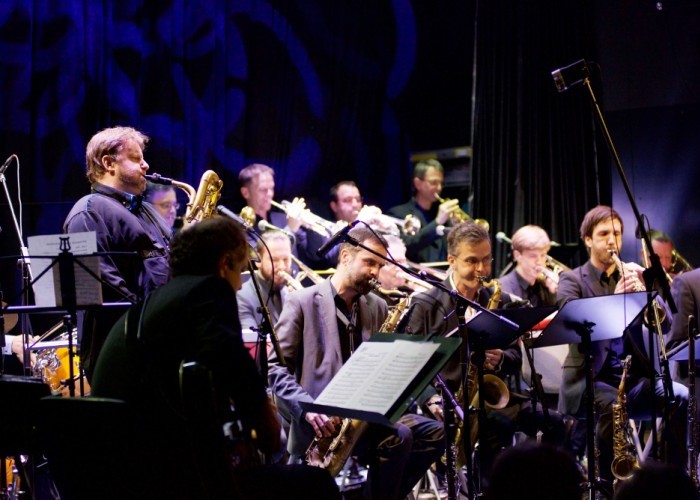
Steffen Schorn (saxophone soloist at left) performs with and leads the Zurich Jazz Orchestra.
(Photo: Palma Fiacco)A cinematic quality permeates the three-movement, titular suite on the Zurich Jazz Orchestra’s new album, Three Pictures (Mons). Written by the 18-piece ensemble’s musical director, Steffen Schorn, the suite opens with the sounds of whistling wind and rattling percussion, before a fetching horn theme enters like a movie’s lead character, singing like a cowboy with a powerful horse of low-register reeds below him.
The German-born Schorn, an emerging creative force on Europe’s large-ensemble scene, had nothing as specific as that in mind as he composed the piece. Instead, he said by phone from Switzerland, he was imagining geometric shapes that kept changing dimensions as they busily moved around. He had challenged himself to create the entire suite from just nine tones, a limitation that contributes to the dizzying thickness of the music.
The music’s muscular bottom is a product of Schorn’s own experiences in the reed section. He played low-pitched reeds in the George Gruntz Concert Band, among others, and on this new album, he plays bass saxophone, tuba, bass clarinet, contrabass clarinet and bass flute—as well as keyboards and higher-pitched horns.
“If you’re on the bottom,” Schorn pointed out, “you can really affect the band, both the rhythm and the harmony. You can push the tempo or pull back; you can alter the harmony by playing a different note. You have the bass function, but it’s a breathing sound, so you can articulate phrasing like a singer. The lower-register instruments have far more overtones, so they filter into much of the sound. [Listeners] are hearing more of it than they realize.”
When Schorn solos on the album, however, he does so on the C-melody saxophone, a rare instrument pitched between tenor and alto.
“The C-melody saxophone has this in-between sound,” he said, “a really smooth sound, like the cor anglais; it blends really well. Stan Getz is a major influence on me, especially his work with the Four Brothers [Woody Herman’s second ‘Herd’], and the C-melody saxophone helps me get that sound. I love different tone colors.”
In addition to playing in the Zurich Jazz Orchestra and Cologne-based a cappella saxophone quartet Kölner Saxophon Mafia, Schorn is also the jazz curator for the Norwegian Wind Ensemble; the leader of his own septet, trio and duo; and a member of the NDR Big Band. All these groups benefit from the financial support that European governments give to arts groups.
“These subsidized ensembles enable us musicians to work on a regular basis,” he said. “But there are different levels of support. The WDR Big Band, which I used to play for, has a lot of money. They work full time with shows every week like a regular orchestra. The Zurich Jazz Orchestra, by contrast, has a smaller budget from the canton and the city, but we can do monthly gigs in clubs and special projects. That’s the most important thing for a big band: to be able to work enough to develop a sound and not just learn specific pieces.”
This enables large ensembles to work on compositions that are more ambitious than songs simply expanded for more instruments. Three Pictures also includes a three-part “Africa Suite,” the two-part “Der Wildbotz,” the retro-swing number “Keep Your Tongue” and the romantic “Ballade.”
“For many years,” Schorn recalled, “I wrote in the classic jazz manner: ‘A’ and ‘B’ sections with a bridge. But then I heard Hermeto Pascoal, who had constant melodic development, and I wanted to do the same. He used slash-chords that can go in any direction. I tried to do it, but I couldn’t get the hang of it. Finally, after five years, I was able to write a long-form melody.” DB
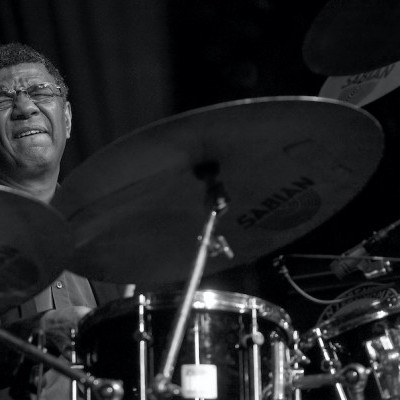
Jack DeJohnette boasted a musical resume that was as long as it was fearsome.
Oct 28, 2025 10:47 AM
Jack DeJohnette, a bold and resourceful drummer and NEA Jazz Master who forged a unique vocabulary on the kit over his…

D’Angelo achieved commercial and critical success experimenting with a fusion of jazz, funk, soul, R&B and hip-hop.
Oct 14, 2025 1:47 PM
D’Angelo, a Grammy-winning R&B and neo-soul singer, guitarist and pianist who exerted a profound influence on 21st…
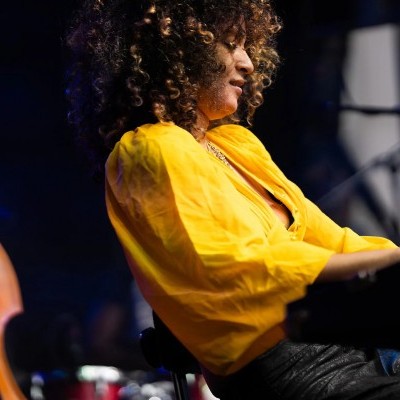
Kandace Springs channeled Shirley Horn’s deliberate phrasing and sublime self-accompaniment during her set at this year’s Pittsburgh International Jazz Festival.
Sep 30, 2025 12:28 PM
Janis Burley, the Pittsburgh International Jazz Festival’s founder and artistic director, did not, as might be…
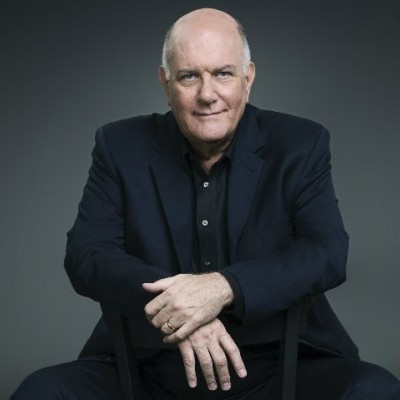
Jim McNeely’s singular body of work had a profound and lasting influence on many of today’s top jazz composers in the U.S. and in Europe.
Oct 7, 2025 3:40 PM
Pianist Jim McNeely, one of the most distinguished large ensemble jazz composers of his generation, died Sept. 26 at…
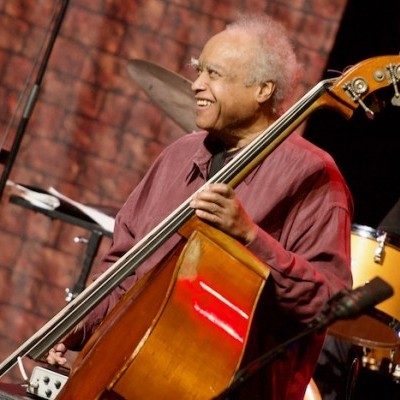
Drummond was cherished by generations of mainstream jazz listeners and bandleaders for his authoritative tonal presence, a defining quality of his style most apparent when he played his instrument unamplified.
Nov 4, 2025 11:39 AM
Ray Drummond, a first-call bassist who appeared on hundreds of albums as a sideman for some of the top names in jazz…